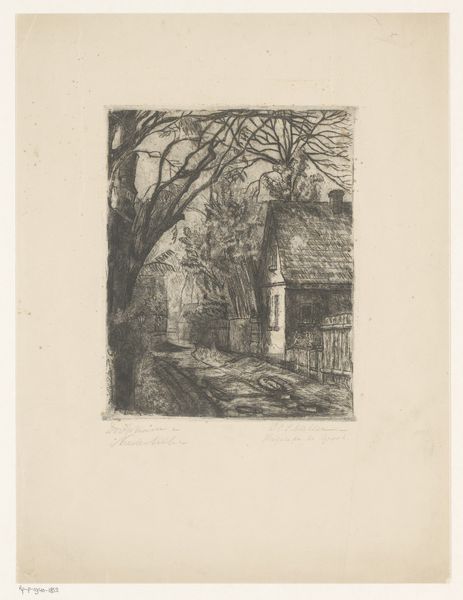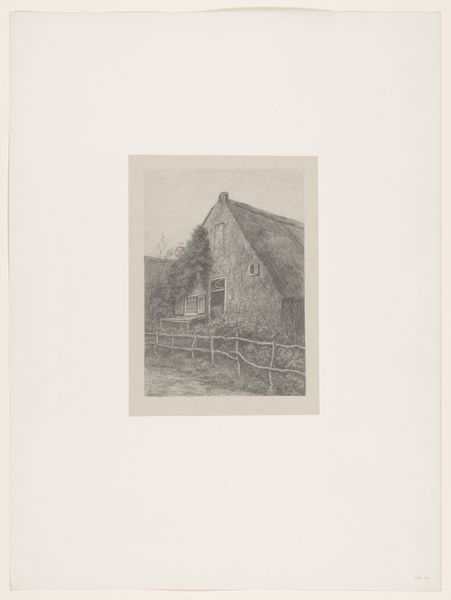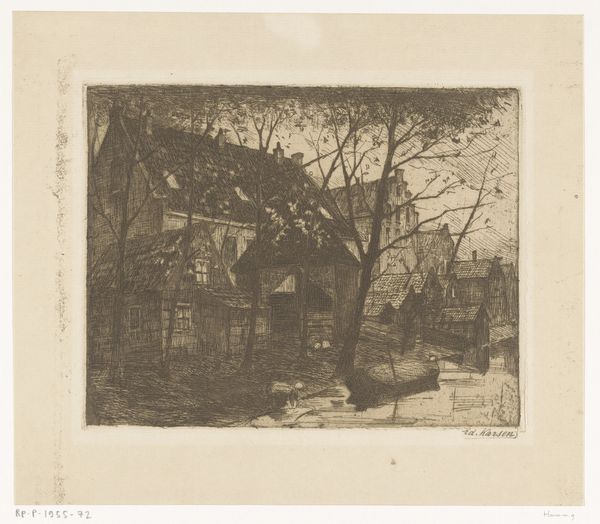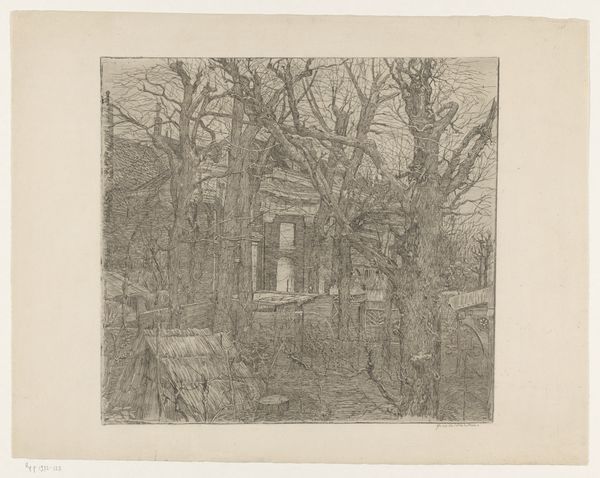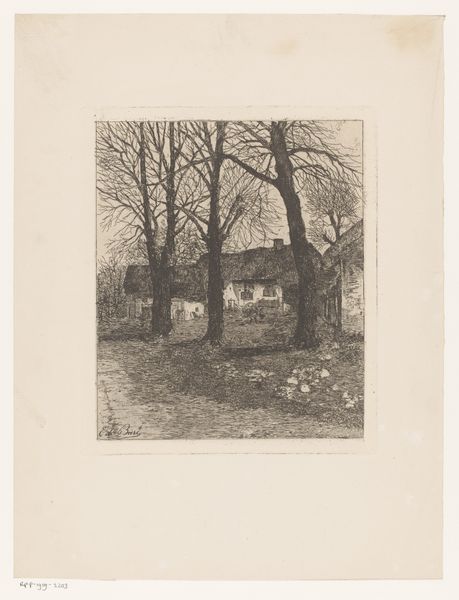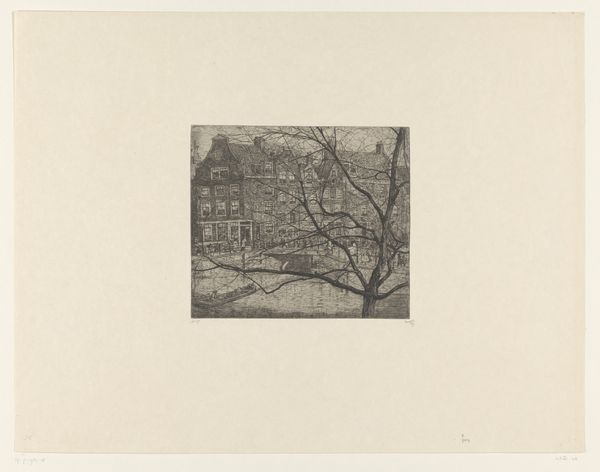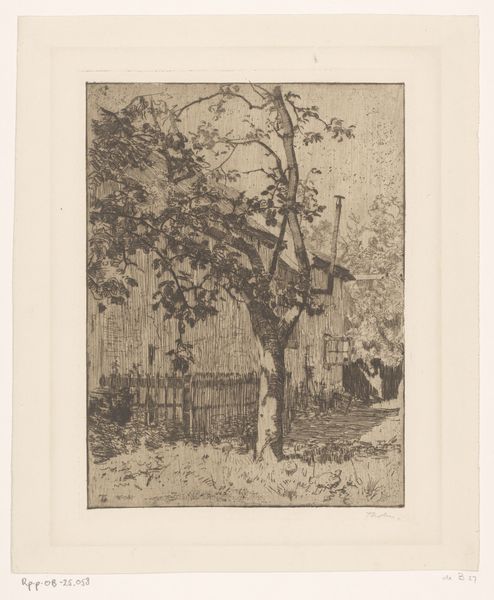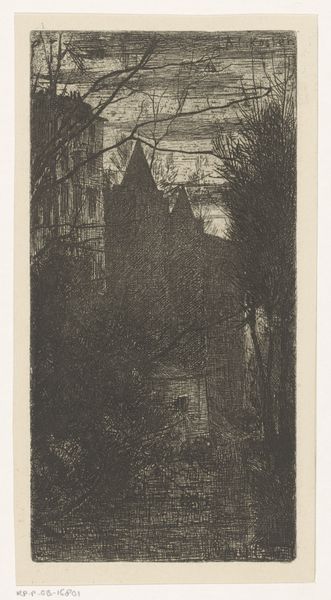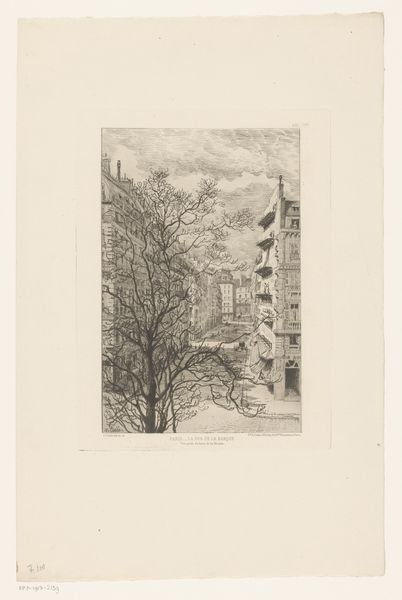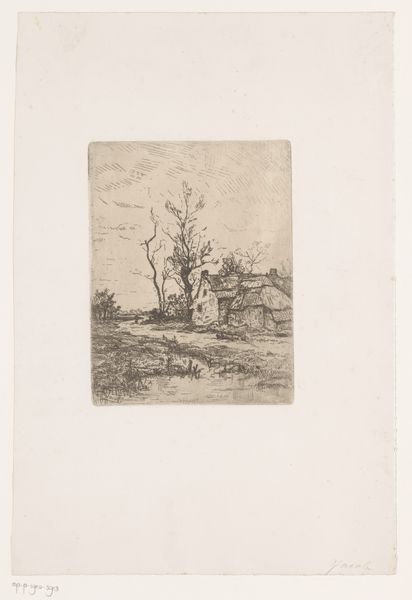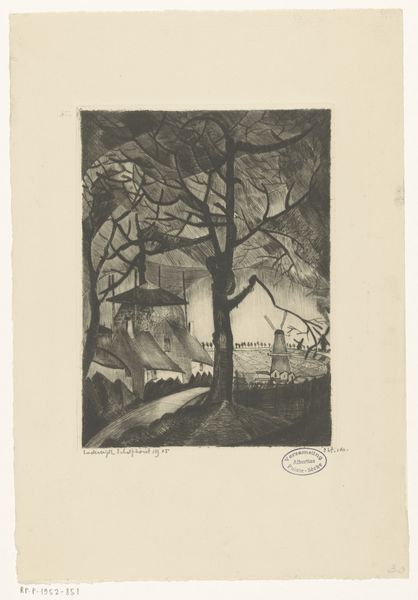
print, etching
#
16_19th-century
#
ink paper printed
# print
#
impressionism
#
etching
#
pencil sketch
#
landscape
#
cityscape
#
watercolor
#
realism
Dimensions: height 246 mm, width 197 mm
Copyright: Rijks Museum: Open Domain
Curator: The mood of this print strikes me immediately – melancholic and almost secretive. It's dominated by grayscale tones, giving a somewhat gloomy atmosphere. Editor: That’s quite perceptive. We're looking at "Binnenplaats van de Église Saint-Julien-le-Pauvre te Parijs" created sometime between 1862 and 1913 by Alexis Forel. It is a print made with etching techniques on paper, invoking both realism and hints of impressionism in its cityscape portrayal. Curator: The architectural elements loom like watchful sentinels. I can see the clear interplay between the tree's branches and the old stone, almost as if nature and the city are entangled, hinting at a struggle between two different kinds of timeless power. It uses grayscale to mute out detail. The branches seem very delicate with thin but detailed etching marks. It feels more sketched than carefully carved out, emphasizing a certain immediacy. Editor: Yes, there is that duality. The Église Saint-Julien-le-Pauvre itself has an interesting history. Dating back to the Middle Ages, it was a site of important intellectual and political gatherings before becoming the modest church we see represented here. The very choice of this locale speaks to broader currents in 19th-century art and its relationship to representing historic monuments amidst a rapidly modernizing Paris. Curator: Thinking about the symbolism, that great tree seems almost protective of the building, perhaps representing enduring faith or nature's resilience. Editor: I agree. It could also represent the changing societal views of institutions, both literally and figuratively standing in shadow. It’s particularly striking that Forel captured it in monochrome, underscoring a sense of gravity that speaks to an introspective reading. This kind of work gives visibility to lesser known places and perhaps, through it, to marginalized voices within a city. Curator: It is certainly successful in imbuing the courtyard with deep reflection, turning a simple location into a compelling historical and cultural statement. Editor: Exactly, I now see it more as a captured moment ripe with a unique dialogue, offering us a timeless interaction to observe.
Comments
No comments
Be the first to comment and join the conversation on the ultimate creative platform.
